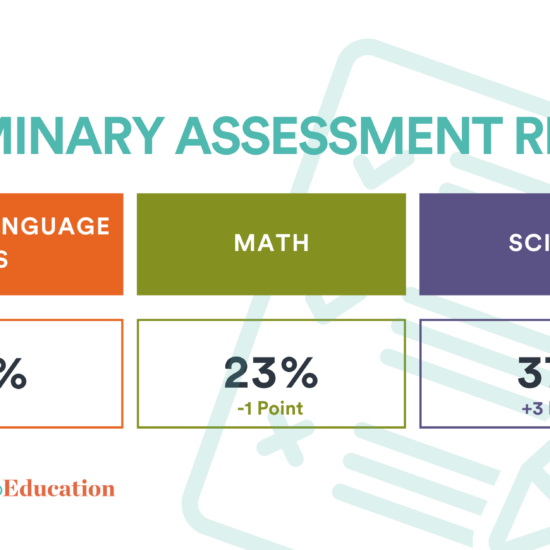
The New Mexico Public Education Department (PED) released graduation rate data for the class of 2023 on July 11, presenting a mixed picture of the state’s educational progress.
While PED focused on the 95.77 percent graduation rate for seniors who qualified as Career Technical Education (CTE) concentrators, the overall graduation rate for New Mexico high school seniors was a much weaker 76.7 percent.
This figure marks only a slight increase of 0.2 percent from the previous year’s rate of 76.5 percent.
A Reality Check
Despite the high graduation rates for CTE students, the overall picture remains troubling.
New Mexico’s overall graduation rate has stagnated around the mid-70s for the past four years. In 2023, the rate rose slightly to 76.7 percent.
Among student groups identified in the Yazzie-Martinez decision (in which a New Mexico district court judge ruled the state was failing to provide a “sufficient” education to particular groups of students), the overall graduation rates were:
- Economically Disadvantaged – 69.7 percent, an increase of 3.7 percentage points
- English Language Learners – 74.9 percent, a decrease of 1.1 percentage points
- Students with Disabilities – 68.5 percent, an increase of 1.4 percentage points
- Native American Students – 74.7 percent, an increase of 2.7 percentage points
In 2014 New Mexico’s graduation rate was 69.3 percent. Though there has since been a slight improvement, the pace has slowed significantly. New Mexico’s graduation rate first hit the 70s in 2016 when the state reached a rate of 71 percent.
In 2020, the COVID-19 class saw graduation rates of 76.9 percent; the class of 2021 had a rate of 76.8 percent; the class of 2022 had a rate of 76.5 percent.
In a statement released with the 2023 data, Arsenio Romero, Public Education Secretary said, “A stabilized graduation rate means that our improvements are not a fluke. Our goal is to increase and stabilize the graduation rate for all student subgroups. A stable, across-the-board graduation rate is an indicator of an equitable public education system for all students.”
The state has stagnated in the 70 percent range, resting here for eight years.
CTE Concentrators Shine
CTE concentrators, defined as students completing two or more courses in an approved program of study or career cluster, are a bright spot in New Mexico’s educational results.
PED said the near-perfect graduation rate among these students underscores the effectiveness of practical, skills-based learning. “The 2023 graduation data is a testament to the power of practical, skills-based learning,” Romero said, “When students view education as a pathway to a successful career, they are more engaged.”
“The PED will continue to develop our career technical programs and promote them to schools and districts,” Romero said.
Success Stories and Ongoing Challenges
Though the state’s results are stagnant, some school districts in New Mexico outperformed the state average and demonstrated significant growth in their graduation rates.
Bernalillo Public Schools, Gadsden Independent Schools, and Bloomfield Public Schools were all above the state average, particularly in the Yazzie-Martinez subgroups.
Bernalillo Public Schools achieved an overall graduation rate of 80 percent, compared to the state’s 76.7 percent. Among the Yazzie-Martinez subgroups, Bernalillo also did better than the state: economically disadvantaged students graduated at a rate of 79.7 percent, English learners at 78.7 percent, students with disabilities at 75.5 percent, and Native American students at 77.6 percent.
Bloomfield Public Schools surpassed state averages with an overall graduation rate of 84.4 percent. The district also demonstrated better than average outcomes within the Yazzie-Martinez groups: economically disadvantaged students achieved an 86.6 percent graduation rate, English learners 86.1 percent, students with disabilities 79.3 percent, and Native American students 83.2 percent.
Gadsden Independent Schools achieved the highest overall graduation rate among the three districts at 87.8 percent, far exceeding the state average. The district’s performance in the Yazzie-Martinez subgroups was also better than the state’s performance: economically disadvantaged students graduated at a rate of 86.5 percent, English learners 86.4 percent, students with disabilities 84.6 percent, and Native American students achieved a perfect 100 percent graduation rate.
According to the Public Education Department, these districts have implemented college and career readiness programs, such as NextGen and Perkins CTE, Pathway2Careers, and Advanced Placement courses, contributing to their success.
Despite these local successes, the overall state data signals a need for continued and enhanced efforts to improve graduation rates across the board.







